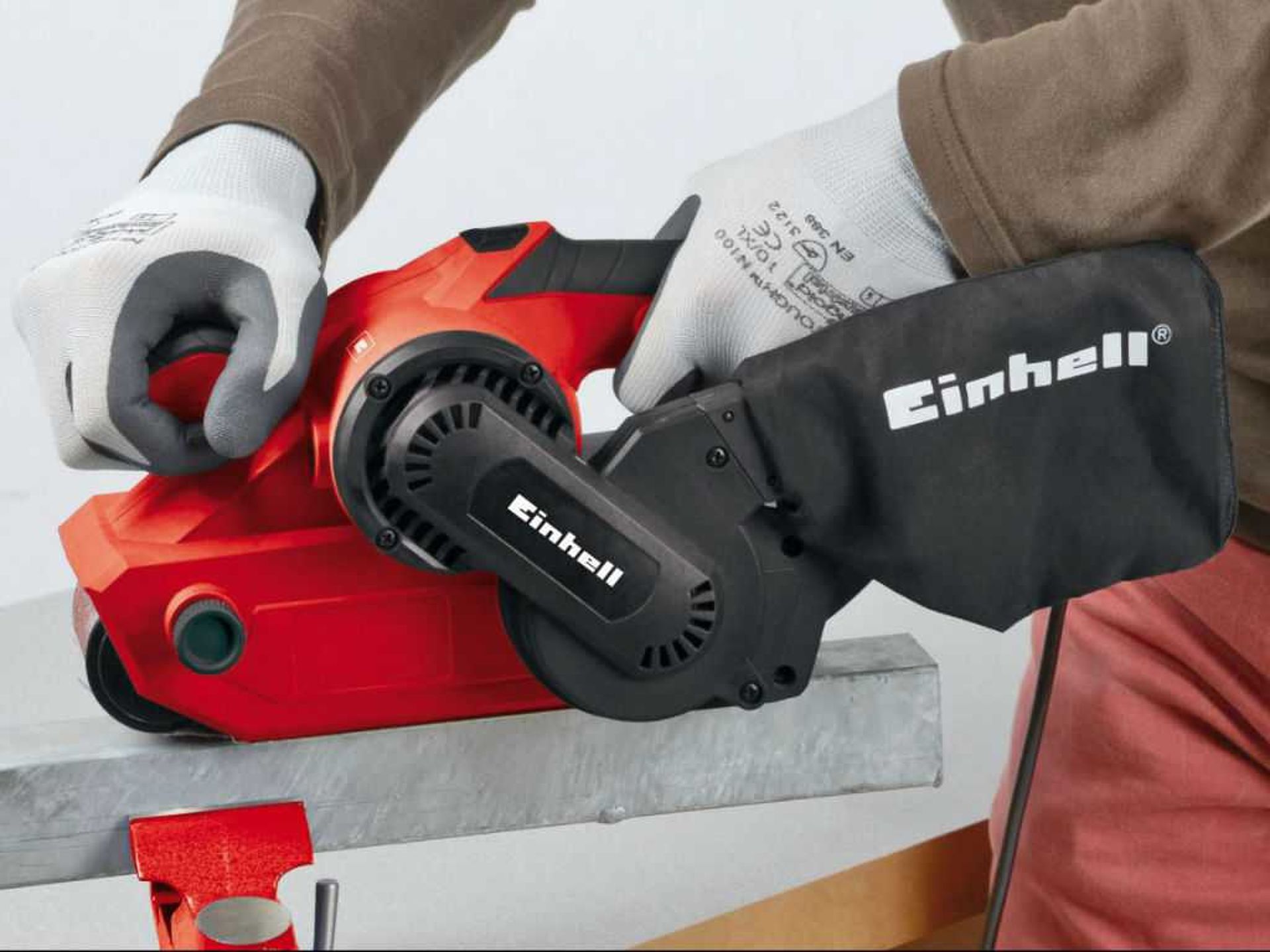The belt sander
What is a belt sander and how does it work? In this article we’ll answer your most frequently asked questions about the use of belt sanders.
Construction of the belt sander
Basically, the belt sander consists of two rollers over which a sanding belt is driven. There is a drive roller and a guide roller. The guide roller can usually be adjusted so that the sanding belt runs straight on the two rollers. The sanding belt runs over a pressure plate, which is arranged between the two rollers and provides the necessary pressure on the workpiece. Sanding belts are available in different sizes and lengths, but there are standard sizes for conventional belt sanders. Today, the sanding belt can be changed without using any tools. A quick release reduces the distance between the two rollers, making it easy to replace the sanding belt. The belt sander is fitted with a lockable switch which makes continuous operation possible. Large handles at the back and at the front ensure that the belt sander can be guided safely.
Some belt sanders are configured so that they can be fixed to a workbench for stationary operation. If a lot of material is removed, it inevitably creates a lot of dust. Therefore, most belt sanders are fitted with a dust bag or dust container. In contrast to dust bags, dust containers with their integrated filters hold much more dust. In addition, many manufacturers offer adapters for connecting a vacuum cleaner. Speed adjustment is helpful for different sanding tasks. The higher the speed, the more material is removed.
Tasks
The belt sander is suitable for working on wood, metal and plastic, as well as steel/iron. It is important to use the right sanding belt for each. The belt sander is our specialist tool if you want to work on larger surfaces. Its main tasks are the removal of old layers of paint, as well as the planing of damaged wooden surfaces. The straightening of wooden edges or the structuring of wooden surfaces is no problem with the belt sander. However, over time more and more belt grinders could be operated as stationary devices, which opened up a further area of application. Sanding smaller workpieces on the belt sander. For example, slats can be bevelled, bars straightened, threaded rods deburred, rust removed from iron parts and much more. This makes the belt sander a powerful universal sander for the most diverse tasks in your workshop.
Working with the belt sander
If you’re using the belt sander for the first time, you’ll be surprised by the power (and the noise!). As with all sanders, you should always keep the belt sander moving to avoid deep sanding grooves. You do not need to exert much pressure because the sanding belt naturally absorbs more material than oscillating sandpaper. The belt sander always pulls away from the user, so you have to be careful to hold the machine firmly. So that the belt sander with the pressure plate rests as straight as possible on the workpiece, you should use the front handle. This way you’ll keep control of the machine.
When sanding wood you should make sure that the sanding always takes place in the fibre direction or at a slight angle to the fibre direction. This improves sanding results. The grain size of sandpaper ranges from K16 to K240, the lower the grain size, the coarser the sandpaper. The coarser the sandpaper, the more material will be removed, but the rougher the sanding pattern will be.

Personal protective equipment when working
As with all work with rotating machine parts, you should not wear loose clothing. Safety goggles and ear protection are essential when working with belt sanders. If you can’t or don’t want to connect the belt sander to a workshop vacuum cleaner, you should wear a dust mask.
As you see, the belt sander is not only very powerful, but also a very versatile sanding machine.








